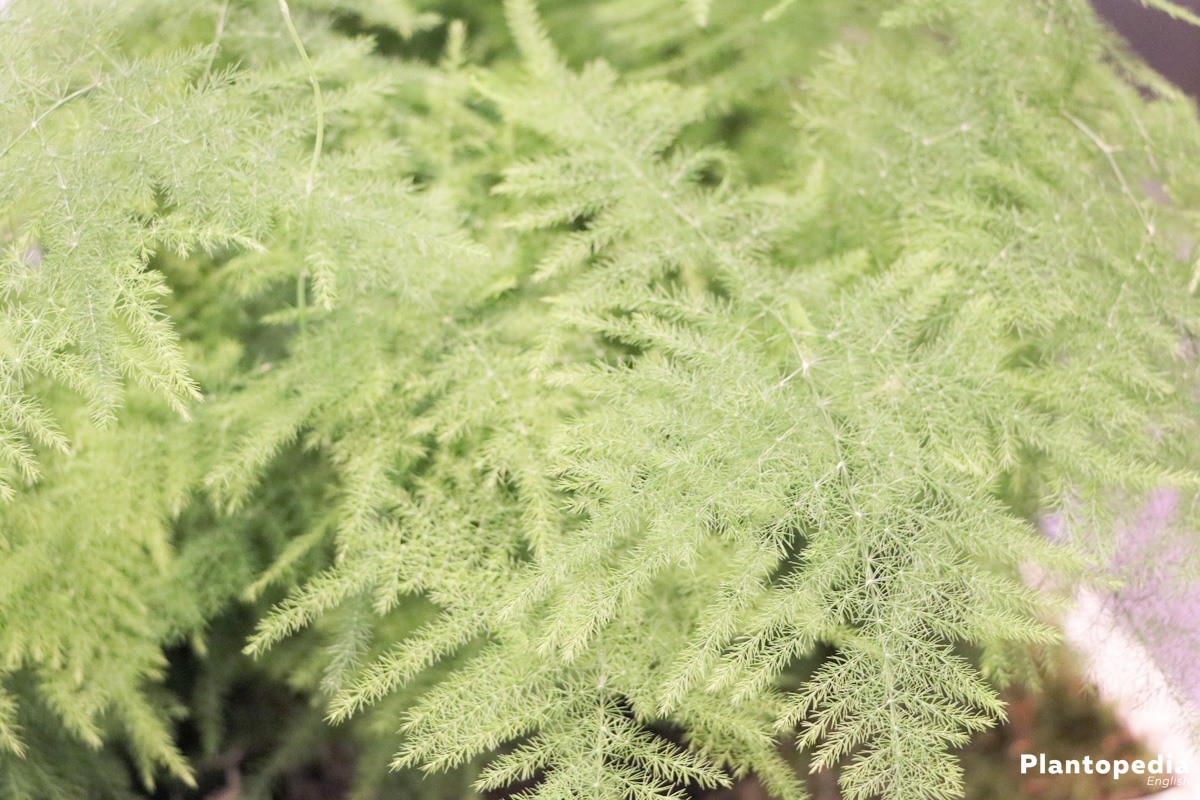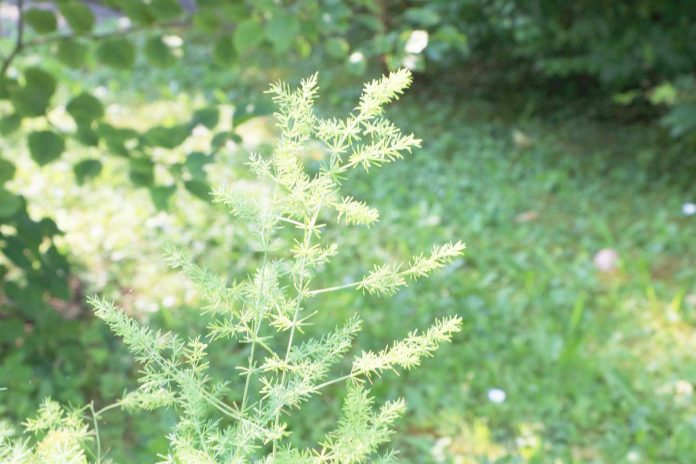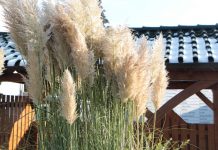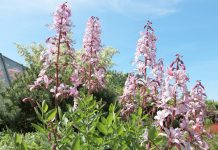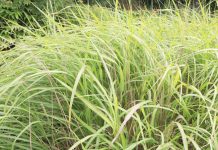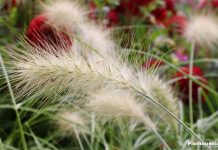The visual appearance of your living room will surely be upgraded with the majestic stature and the thick and delicate leaves of the asparagus fern. The strong relative to the vegetable asparagus impresses with its decorative, climbing or hanging vines which reach a height of up to 150 cm. In order for it to reach its full growth potential, one has to abide by some rules, as it all depends upon the proper care. This instruction will fully explain how to successfully cultivate an asparagus.
Plant Profile
Contents
- Species: Asparagus
- Designation of the species: Asparagus fern (Asparagus densiflorus ssp.)
- Hanging, evergreen half shrub
- Originated in South America
- Minimum temperature: 10 degrees Celsius
- Growth heights of up to 80 to 150 cm
- Strong, bale-like roots
- Vines or lean ferns are inhabited needle-like phylloclades
- unassuming, scented leaves in June and August
- red or Orange like poisonous berries in Fall
The asparagus fern places itself in position in your living room with its needle-like leaved vines and ferns. The majestic leaf plant can be arranged along a trellis or the innovative hanging basket and will serve as a floral design feature, without requiring much taking care of.
The South African asparagus fern has conquered the hearts of every hobby gardener as it, compared to its close relative, the delicious edible asparagus, does not require cool temperatures and has thus established itself a dominant indoor plant. This care instruction will shed a light on every aspect of a successful cultivation in a detailed and practice-oriented manner.
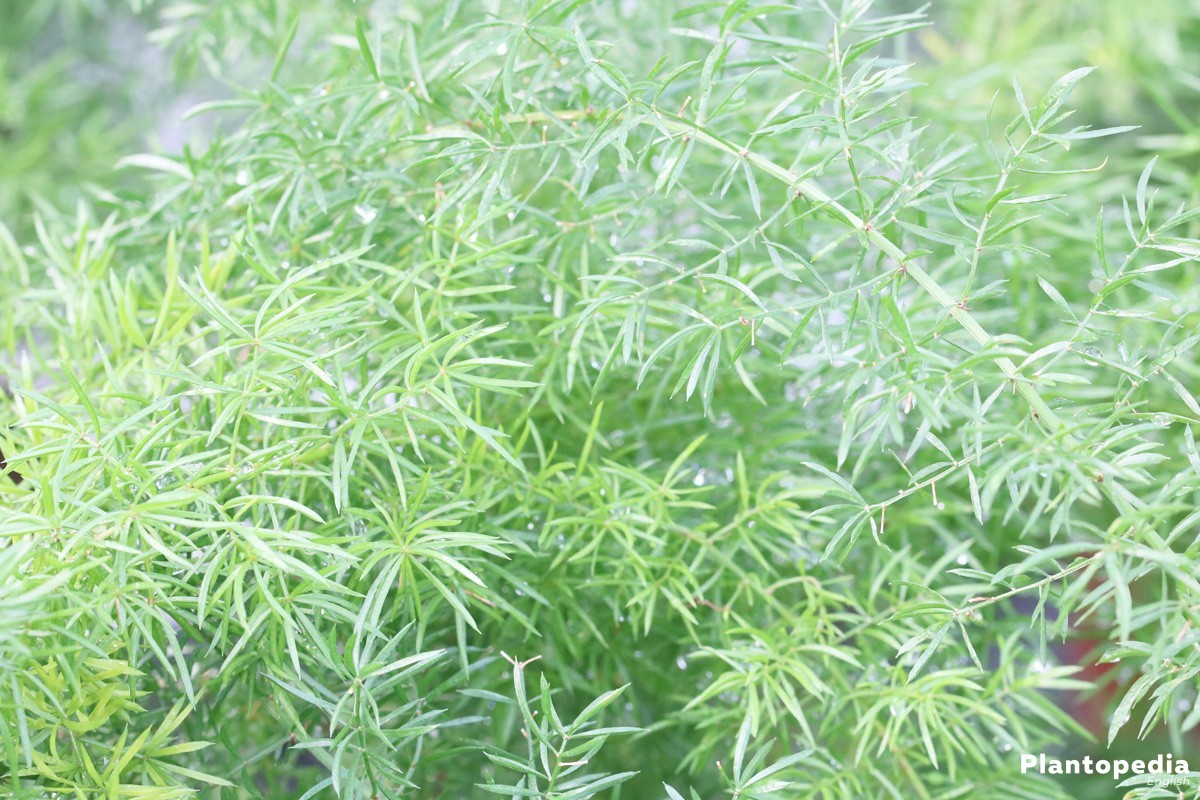
Care
The explicit designation of asparagus fern has been allocated to the species Asparagus densiflorus. More species which can be, stated by gardeners, allocated to the asparagus fern are, due to their similarly decorative habitus, the Asparagus falcatus or the Asparagus setaceus. The following care instruction hence includes all of the asparagus species’ which have made a name for themselves as being able to be cultivated indoors.
Location
Location indoors
All varieties of the asparagus fern prefer a bright location which will not be under direct sun exposure during midday. The asparagus proves also as flexible concerning ideal temperatures. As long as the quicksilver scale rises above 10 degrees, all is well. The recommendations and challenges are opening up a multitude of options to integrate your indoor plant in the decorating of your living room.
- much sun exposure during the day at the western window with a moderate sun exposure during the afternoon
- at the eastern window with day-long bright light exposure, complemented with direct midday sun
- at the southern window as long as the intensity of the sun is dimmed by curtains
Direct sun rays shining onto the asparagus fern are thus not ideal as the delicate vines and pinna leaves become yellow after a short while. Insufficient light exposure on the other hand, like it occurs at a northern window, could cause long, leave less water shoot
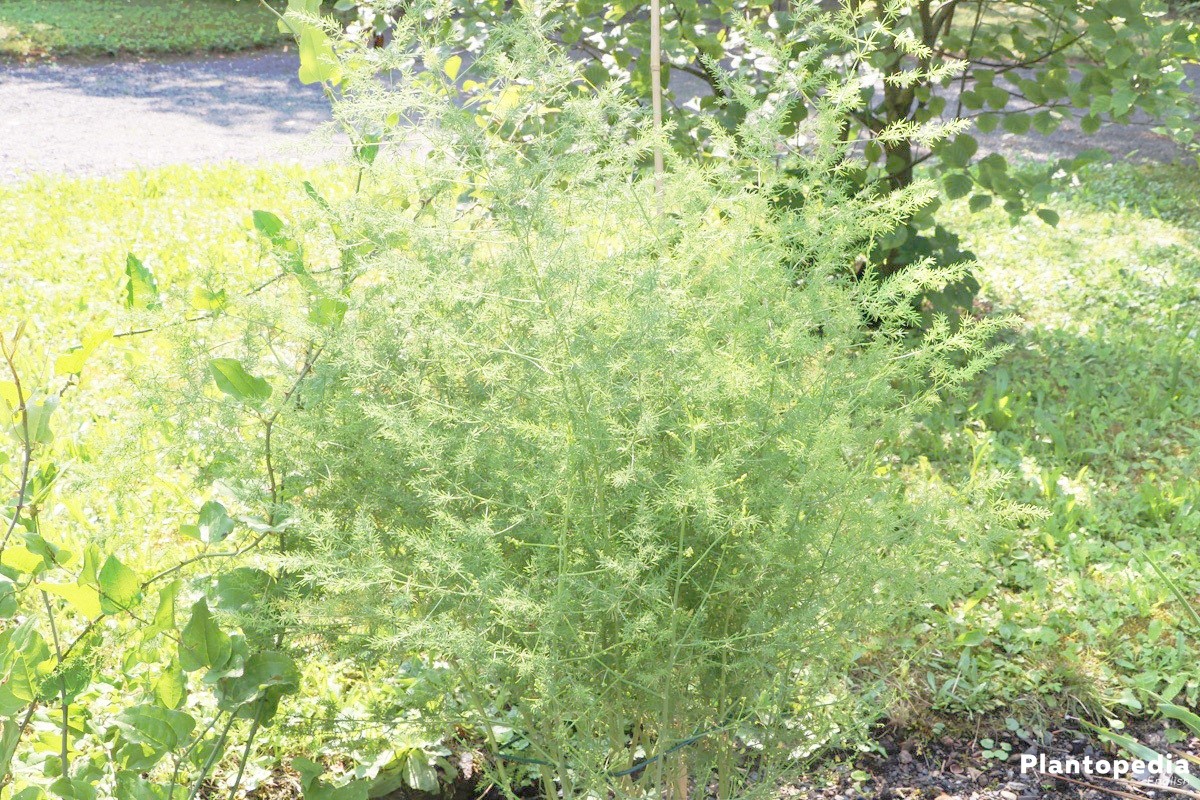
Location outside
A location outside will be tolerated by the asparagus fern as long as the temperatures are not falling under 10 degrees Celsius. There is no objecting to replanting the impressive ornamental leaf plant on your balcony or terrace between the middle of May and the beginning of May.
Please select a half-shaded location, sheltered from wind and rain. Creative hobby gardeners integrate the opulent green plant into off-sun flower-beds where the evergreen, thick vines create a marvelous contrast with the luminous colors of the blossom. In order to do this, simply place the asparagus in a pot with a trellis and soil in order for the plant to be stored by winter in an unproblematic fashion.
Humidity
Asparagus fern, which inhabited the tropic regions of Africa, prefers a humidity of 60 percent and higher. The beauty of the leaves is often being used in order to decorate the rooms with a humid ambiance. Place the plant for instance into a bathroom, an indoor pool or near a sauna or other spa-rooms with sufficient light exposure.
If you however place the asparagus in your living room, make sure to balance the low humidity with humidifiers, an indoor fountain or an aquarium. If you fill the trivet with gravel and water immediately near the plant, you can create a moist micro climate near the plant.
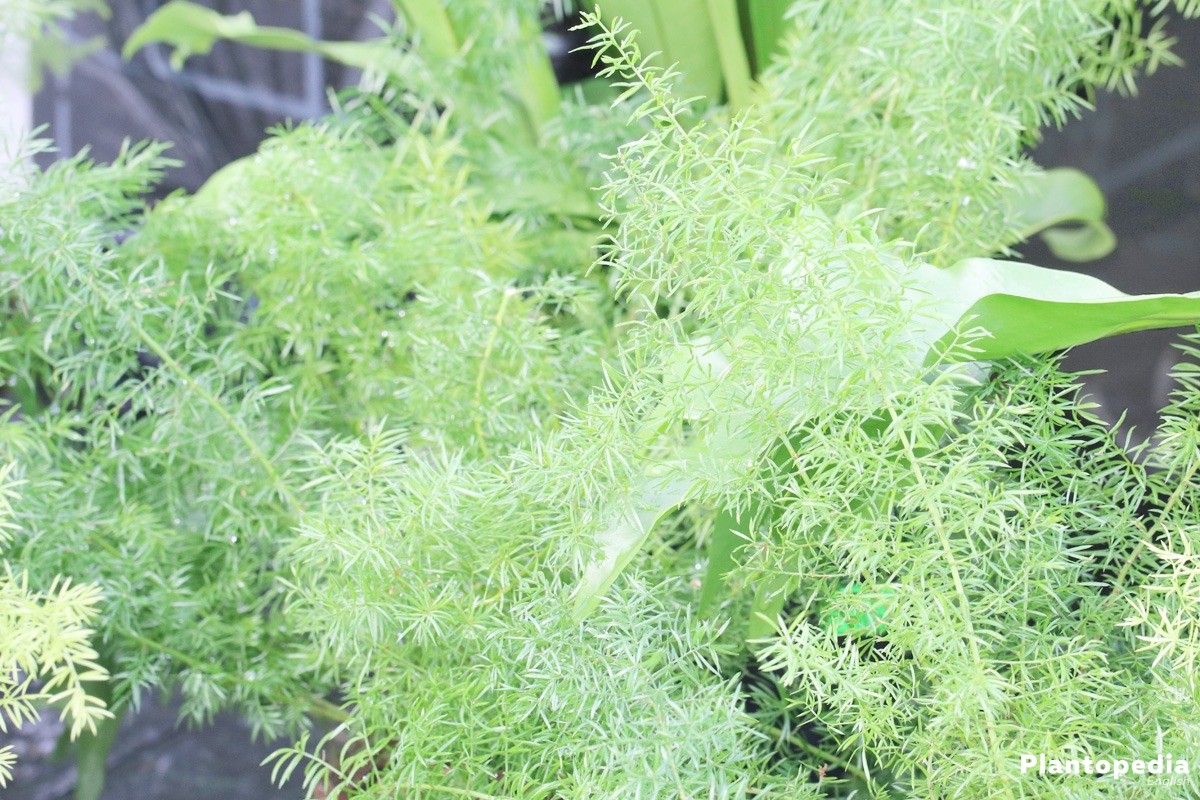
Make sure that no water can reach into the substrate through the substrate. If you spray your foreign plant every day with soft water, it will grow to a real beauty. This applies for the vegetation period, which lies between April and October.
Watering
The water needs of the tropic half shrub are at a high level during the growth phase; and sinks gradually which progressed growth.
This is how the water needs are correctly regulated:
- water sufficiently from April until October with lime free water without causing soil wetness
- always water when the surface of the substrate appears dry
- let the soft, lukewarm water slowly run on the soil until the trivet has filled
- if the trivet is not filled with gravel, let the superfluous water run out after 20 minutes
- from November until March until water when the soil is threatened of drying out
This watering rhythm adheres to the same watering mechanism applied in the original habitat of the plants. In these regions, during the rainy season, 80% of the total precipitation rains down in these months. The remaining 20% rain down during the cooler dry period.
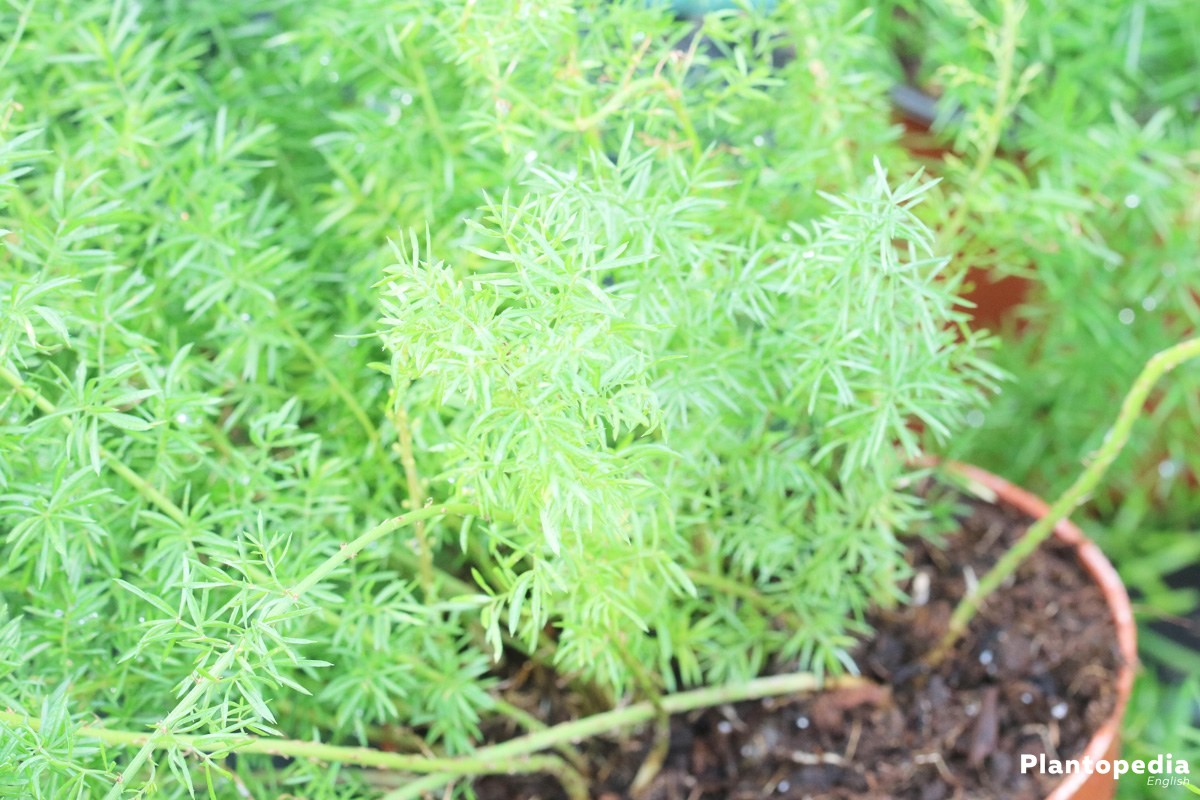
Fertilizing
The asparagus fern proves its undemanding nature with the aspect of nutrient supplication. Little to middle sized plants have to be fertilized with a liquid fertilizer for green plants between April and September in a biweekly cycle. A majestic asparagus which can reach a height of more than 100 cm can be spoiled with a weekly fertilizing. Cease the nutrition supply between October and March.
Cutting
Thanks to its high tolerance to cutting, keeping the exotic ornamental leaf plant in an ideal form is not a hard task. Shoots which are too long in size can be cut with no problems. If your plant steps over the desired for growth dimension, you can apply a radical cut. For this intervening measure we recommend a date which is set toward the winter resting period in March.
Concerning older plants we advise looking out for possible thorns which have grown in the wooden part of a vine. With a progressed age, the asparagus fern might surprise with a scented white blossom. Do not cut down the withered inflorescence, as decorative little berries could grow from them.
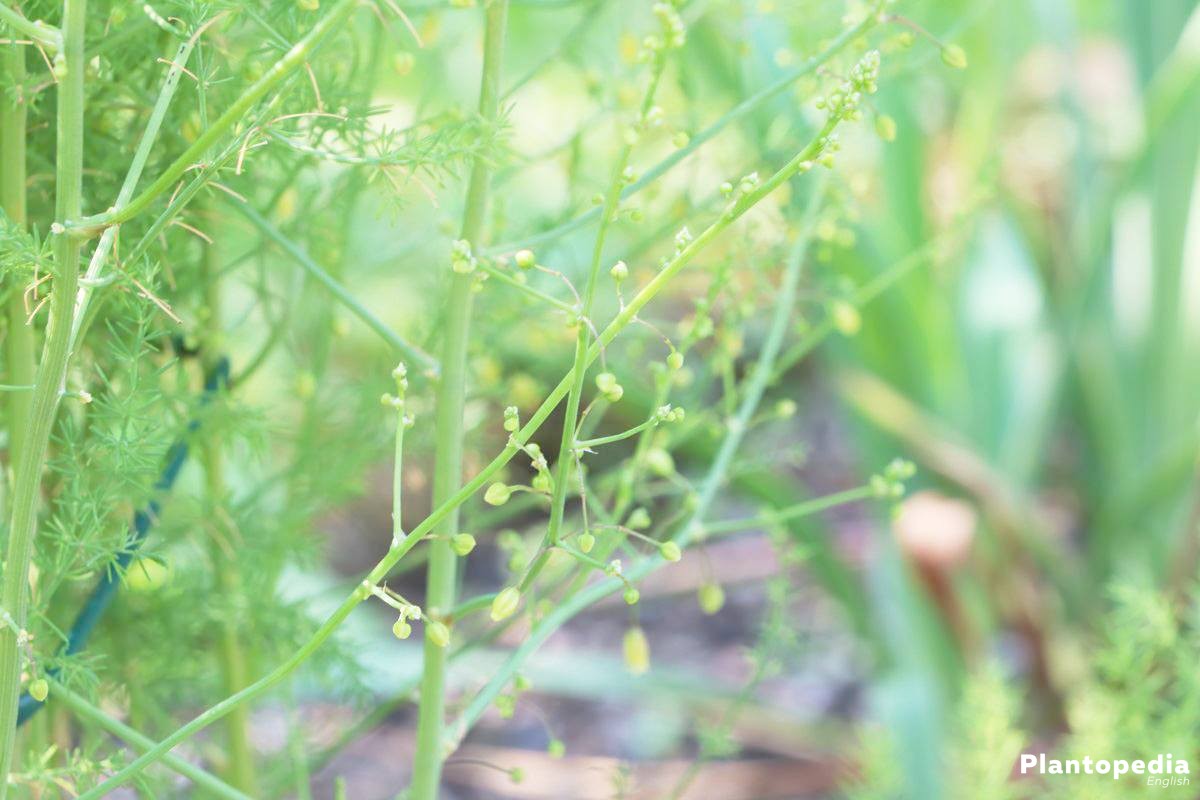
Hibernation
As this care instruction has already shown, the cultivation is directed towards the two tropical vegetation cycles with respectively a hot and moist raining period and a cooler dry period. This is how you get your asparagus fern through winter time without any damages.
- place the plant at a bright, cool location with temperatures between 10 and 15 degrees Celsius
- reduce the watering amount in a fashion so that the soil remains slightly moist and does not dry out
- spray one to two times
- do not add fertilizer between October and March
A consistent care is possible with room temperatures, however carries negative effects on the durability of the tropical climbing artist. Warm and dry air indoors are proving problematic during cooler periods. Prevent, thus, placing the plant near a radiator and continue the regular spraying.
Replanting
The strong rhizomes will have completely taken over the pots in a two to three year cycle. If the root strands are growing out of the root strands, the care program is being extended with the aspect of “replanting”. An appropriate date for this measure is March, shortly before the new vegetation period commences.
Substrate
Take a special focus on the quality of the substrate. An ordinary potting soil should not be used as the asparagus fern relies on spreading its strong roots over several years. The high level of peat in this kind of soil eventually leads to a compression which in return has negative affects on permeability and water storage.
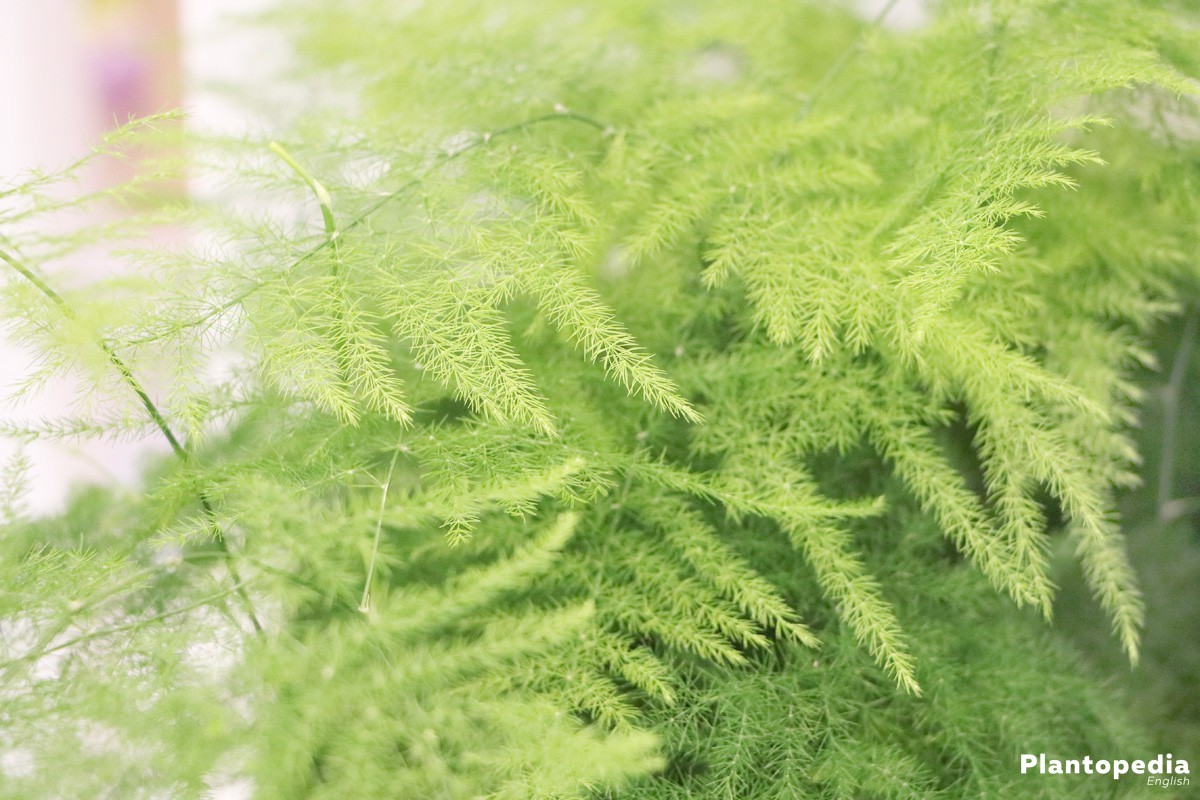
Take a structurally stable bucket potting soil based on compost with little to no peat. A great choice are high quality clay substrates with natural clay, bark humus, coco fibers and perlite. Ideal for asparagus fern is the peat free standard soil CL T Classic with coco peat, wood fibers and substrate compost.
Plant pots
Characteristic for asparagus is the strong root system with thick rhizomes. These have the inclination to push upwards during the growth period. Choose a pot which leaves a sufficient distance between the substrate and the edges of the pot so that the roots have a sufficient amount of space. An opening in the bottom of the pot is necessary in order to prevent water logging.
Step by step instruction
If fresh substrate in a new pot are available, take care of the work in the following order:
- place a drainage on the bottom of the pot with expanded clay spheres and clay shards
- place a fleece with is water and air permeable in order to prevent capping
- place a first layer of the selected substrate
- place the asparagus fern outside of the pot and remove the earth inside
- place the plant in a central position inside of the pot
- fill with substrate in a fashion so that the desired for distance to the edge of the pot is active
Keep a clear sight on the root ball in your focus while replanting the plant; use this measure for cleaning. Rotting and small root strains can now be removed. Tightly press on the earth and water with a sufficient amount of water.
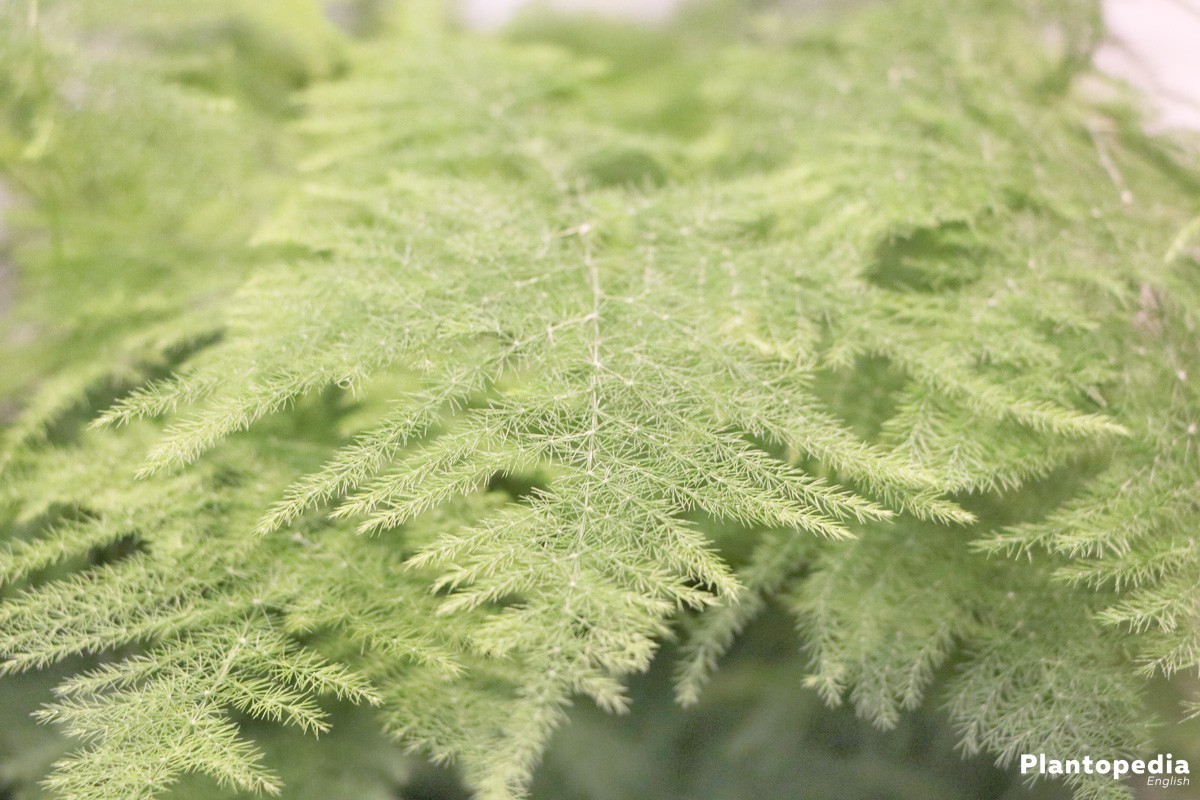
Multiplication
If an asparagus fern has fully convinced you with its fantastic attributes, simply cultivate more plants. The vegetative multiplication has the clear virtue that the replicated young plants carry the same characteristics of the mother plant. As your holding the root bale in your hands anyways while replanting, this is the perfect time for multiplication. This is how it is done:
- take the asparagus fern out of the pot in February or March
- place the root bale on a stable basis
- cut it into two or more pieces with a saw or a sharp knife
- one segment carries at least two shoots
Plant every partial piece into a fresh, loose substrate and water sufficiently. It is important to keep a focus on adhering the previous plant depth. Take care of the young asparagus like it is an adult plant.
Diseases
Asparagus fern is not usually very susceptible to diseases. If any health problems occur, they result out of a lack of care.
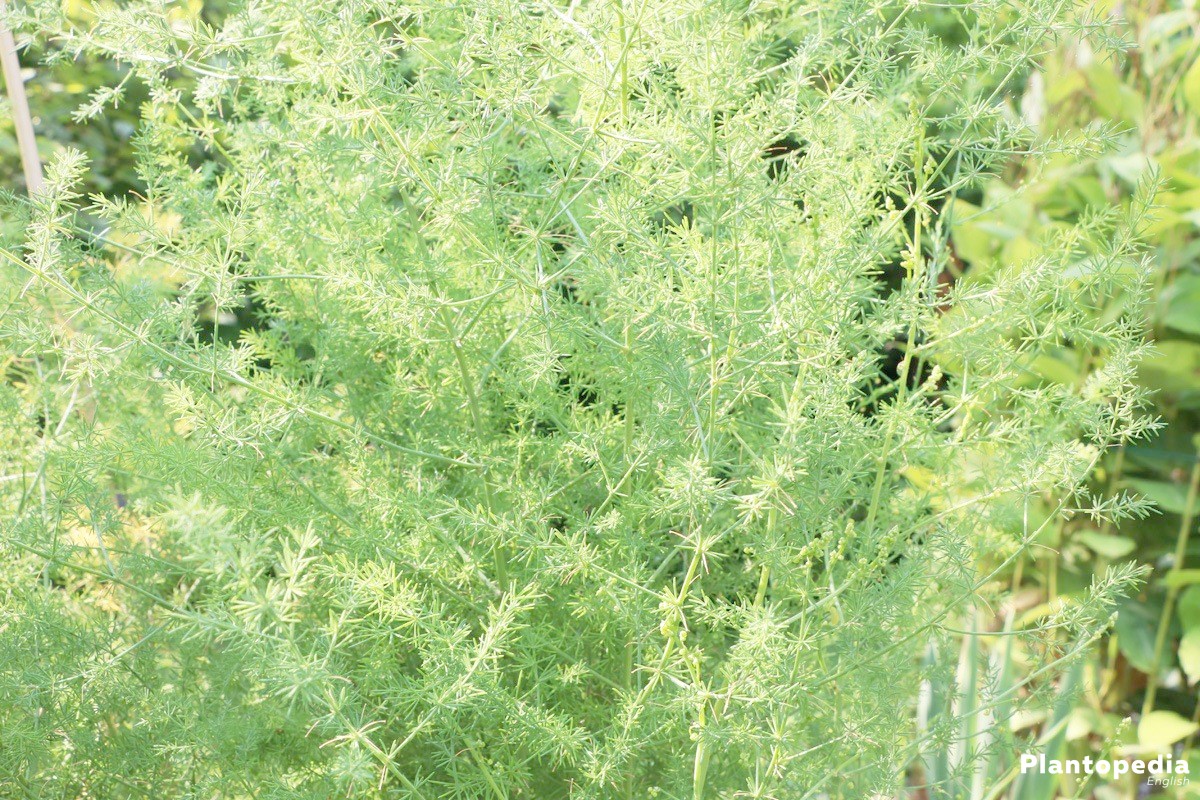
We have summarized the most common causes with tips for remedy:
Dryness
- Symptom: Dropping of leaves
- Solution: Place the root bale into water until water bubbles stop appearing. Frequently water the plant afterwar
Lack of nutrients
- Symptom: Yellow leaves
- Solution: Fertilize weekly or biweekly from April until September
Lack of light
- Symptom: Long, week shoots with no leaves
- Solution: Alteration of the location to a bright, not completely sunny location
The changing of the colors is mostly an indication on soil wetness and rarely on dryness. Check the substrate with thumb testing. If it should be fully wet, replant the suffering asparagus fern in fresh earth and reduce the amount of water.
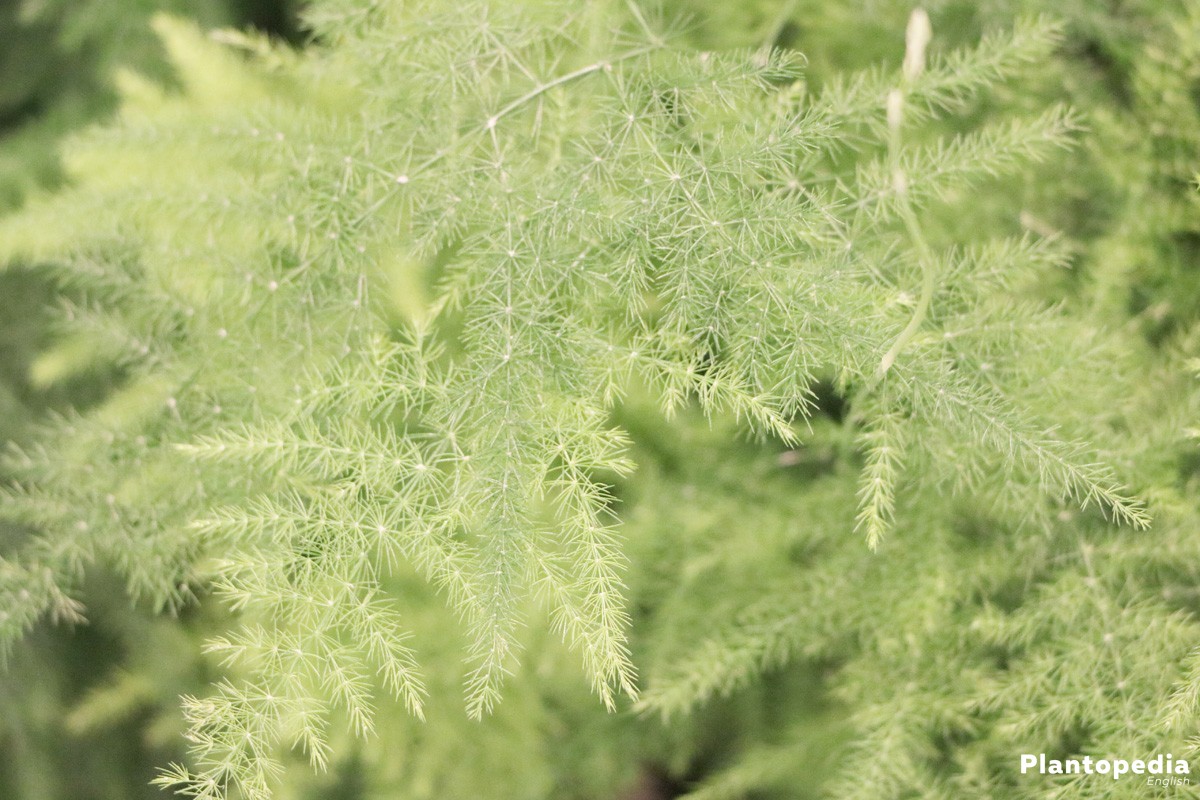
Parasites
It is mostly scale insects which target the asparagus as an indoor plant. Independent of the exact classification of the insect, most of them have the necessary mouth tools to rob the asparagus fern of its life. As the insects are masters of camouflage, you should regularly check the stability and any occurrences of infestation of your plant.
First indications of infestation are white webs, spots and humps on the leaves with brown honeydew on the crusted shoots.
The remedies have proven effective:
- regularly shower a robust plant
- place an affected asparagus plant for several days into an airtight plastic bag
- repeatedly spray a mix of one liter of water and one to two tablespoons paraffin oil
- soak a soft cloth with alcohol to wipe down the leaves and shoots
As scale insects are inclined to reproduce explosively, other plants could be affected as well. It thus makes sense to quarantine an affected asparagus fern. In order to do this, choose a bright, cool room with temperatures between 10 and 15 degrees Celsius as those conditions are unbearable for the insects.
If the recommended household remedies do bring any positive effects, you should apply systemic insecticides. For the application indoors, stab forms have proven effective as they are added into the substrate and are fighting scale insects through the plant lines.
